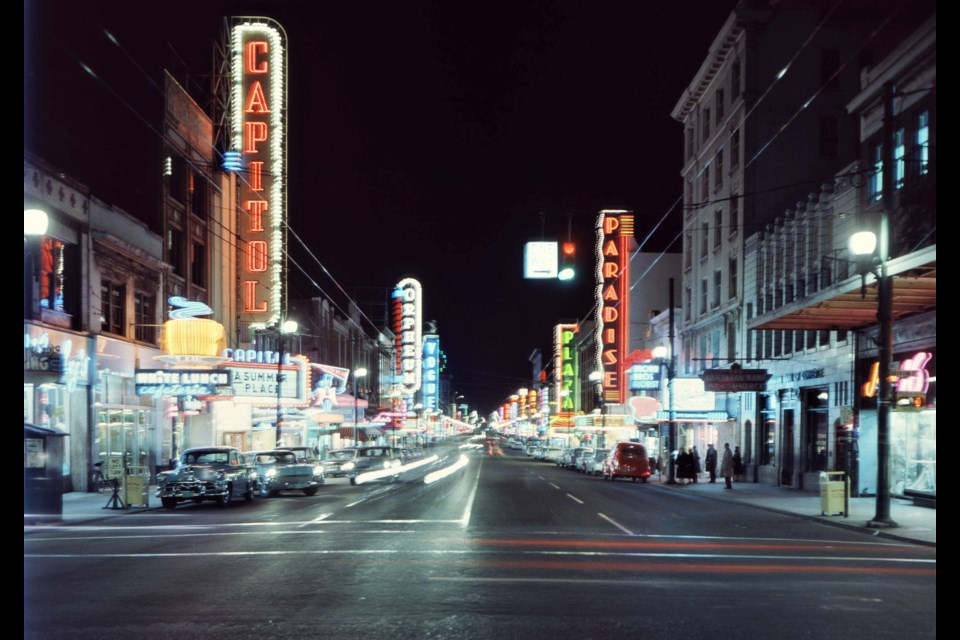Theatre Row. The Granville Entertainment District. The Granville Strip.
The section of Granville Street running through downtown Vancouver, especially from West Georgia to Davie Street, has long been filled with places to go for a show, a dance, or a drink in the evening.
It started in the early days of Vancouver, as the city grew quickly. In 1886, when the city was officially founded, there were about 1,000 people living in the community. It was physically much smaller and focused around Gastown, as the forest covered most of what is now city.
By 1891, thanks to the lumber industry, its status as the terminal for cross-continental railways, its role as a port and the odd gold rush in B.C.'s interior, the city had bumped up to more than 13,000 and had momentum. It nearly doubled to 26,000 in 1901 and then took off, jumping to 100,000 by 1911.
With that early rush came the opportunity for entertainers; this is pre-broadcast media (so not only before the internet and TV, but before radio broadcasts were regular). The theatre was the main form of evening entertainment, with plays, musicals, and concerts all drawing big audiences (movie theatres were new and gaining ground quickly, too).
In Vancouver that led to a number of theatres, with many of them concentrated to "theatre row" on Granville Street. The first, at 765 Granville, was the Vancouver Opera House (built 1891) which was renamed a few times; people who grew up in Vancouver in the 60s might remember it as the Lyric before it was torn down in 1969.
Others soon joined: the Plaza in 1908 (which is now Venue Nightclub), the Dominion in 1912 (it was the Caprice recently, now it's Good Co. Bar), the Globe in 1913 (recently the Granville 7 movie theatre, and soon to be the Rec Room), the Capitol in 1920 (demolished; it stood at 820 Granville).
More and more theatres, both stage and movie, joined the area, including the Orpheum, Vogue, Commodore and Studio; all those names are still visible and vibrant on the Granville Strip to this day.
In the 1960s the area wasn't just full of theatres, but also neon (the city was famous for the number of neon signs), as it was one of the major commercial areas of the city (which, at this time, had a population of more than 400,000 people — not including the metro area).
Many theatres have disappeared, though, or been repurposed. However, the Granville Strip — or, more formally, the Granville Entertainment District — still carries that personality. Policymakers have helped that along through zoning and bylaws, and many drinking establishments joined the neighbourhood over the past couple of decades.
Now it's known throughout the region, for better or worse, as a place for parties, with nightclubs full on weekends and the streets full during the holidays.



